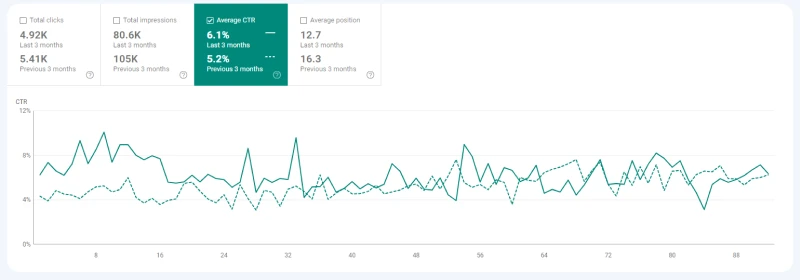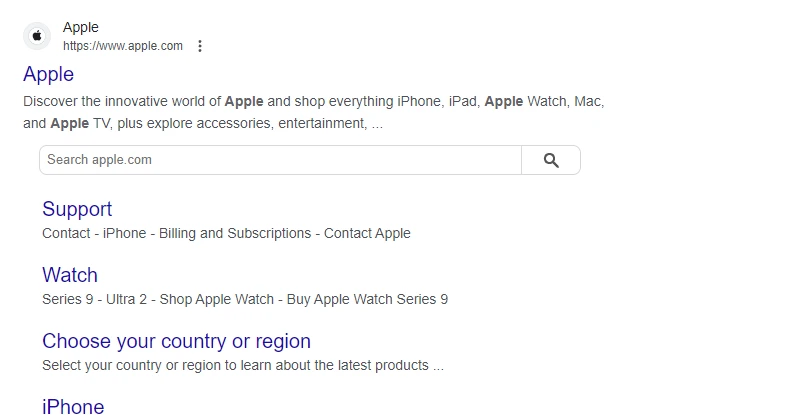Meta Descriptions

In the competitive click driven world of SEO, meta descriptions are a digital icebreaker.
They set the stage for user engagement and act as a virtual elevator pitch for your content. A great meta description sets the expectation for the content and it can significantly influence whether a user clicks through or scrolls past.
This guide unravels the art of creating the perfect meta description, explains its SEO significance, and shows you how our meta description generator can assist in your efforts.
Table of Contents
So, What is a Meta Description?
A meta description is a brief snippet of text embedded within your page’s HTML. While it’s not visible on the webpage itself, it appears beneath your title when your page appears on the search engine results page (SERP) of Google and other search engines. Think of it as a billboard, grabbing the attention of users speeding by on the superhighway, encouraging them to exit the SERP to take a closer look.

Effective meta descriptions are like informational nuggets, they represent the essence of your website and act as a subtle call to action (CTA).
The meta description highlighted above shows how our own snippet appears on Google’s search engine results pages. It captures our brand and it highlights what we offer our users. It’s the prologue to a story that unfolds in full only when you hit our landing page.
Here is what the meta description should look like in the <head> HTML element of your website.
<meta name="description" content=" YOUR_META_DESCRIPTION_COMES_HERE" />The Importance of a Stellar Meta Description Tag
Well-constructed meta-descriptions are pivotal in amplifying your Click-Through Rates (CTR) from SERPs. While the meta description tag isn’t a direct ranking factor, a meta description with the right enticing search keywords can act like a well-placed magnet for organic traffic.

Crafting a Captivating Invitation
Remember, your meta description might be your only invitation to a potential user—it’s your golden opportunity for a first impression. Make it impactful, lay out your proposition, and infuse it with your brand’s unique voice. Doing this can reduce bounce rates once user’s arrive on your landing page which search engines will interpret as an indicator of your content’s quality.
Meta Descriptions, the Technical Must-Haves
In the quest for excellence, there are a few key principles to adhere to. Ignoring them is like going into battle unarmed. So, what exactly do you need to succeed?
Character Limits. Striking the Balance: Aim for a meta description length between 50 and 160 characters. Exceed this, and you risk getting your meta descriptions cut-off in search results. Too brief, and you may fail to capture the user’s attention.
Uniqueness: Write unique meta descriptions for each page to be indexed by Google. This creates a precise overview of each page’s content and optimizes your click-through rates (CTR). Your page’s meta description tag should outline what you have to offer, and provide a summary of your page or website. Duplicate meta descriptions don’t add value or describe the content of your page, so avoid them.
Encoding: Stick to standard alphanumeric characters to prevent display issues across search engines. Special characters create issues and can render in odd ways making your description look messy and confusing.
CTA: Embed a clear Call to Action that motivates the user to click through for more insights.
Keyword Relevance: Include the target keyword(s) you want to rank for, but avoid keyword stuffing. Always place your primary keyword at the front.
Structured Data and Rich Snippets, The Extra Mile: Enhance your search listings by adding extra information about your content. While this doesn’t directly affect your SEO ranking, it can improve your CTR. Tools like Google’s Structured Data Markup Helper and Schema.org can help you here.
The SEO Impact: More Than Just Words
Crafting a compelling meta description is an art that blends creativity, marketing savvy, clear and clever writing, and deep SEO knowledge. While meta descriptions aren’t a direct ranking factor for Google, they still matter in search engine optimization.
Key points to keep in mind:
- Understand Your User’s Intent: To create unique meta descriptions, you must understand your user’s search intent. Uncover the primary questions they want answered, and the problems they’re trying to solve. Begin with keyword research tools and scrutinise the top-ranking pages on SERPs. Generate snippets that resonate with your content and consistently monitor and refine your meta descriptions to enhance their performance.
- User Experience and Bounce Rate: Consistency between your meta descriptions and page content is crucial. When the meta description represents the content accurately, users are less likely to return to the search results page, reducing bounce rates. Search engines like Google will interpret lower bounce rates as a signal that your site offers quality content, which can help your site rank higher.
- Click-through Rate (CTR): Great meta descriptions can also directly affect your CTR. When users encounter your snippet, and it matches their search intent, they’re far likelier to click your link. In many cases this will increase your conversion rate. Higher CTRs also indirectly enhance your search ranking, signalling to search engines that your content is relevant and valuable.
- Keyword Relevance: Incorporating target keywords into your meta descriptions ensures they appear as bold keywords in SERPs when matching with a user’s query. This highlights your result in te search engine and subtly indicates the connection of your content to their needs.
- Establishing Brand Voice: Meta descriptions seem small, but they’re an important shop window into your brand. In a few words, you can convey your brand’s personality and value proposition. Doing this can win user trust and engagement, which is another reason your meta description is a powerful tool for conveying information.
- Improved Social Sharing: In an era of link sharing, your meta descriptions will often be used to preview and share your content. Writing a unique meta description that can encourage that click is a vital step forward in enhancing your site’s overall SEO performance. You can override this with Open Graph meta tags but most website owners neglect this.
How to Find Bad Meta Descriptions
Tools such as Ahrefs, SEMRush, and ScreamingFrog allow you to crawl your website and produce a list of meta descriptions for each individual page. For issues which can be mathematically evaluated (missing, duplicate, incorrect length, Google overwritten), these tools will highlight them for you.
Additionally, AutoSEO will help you automatically create meta descriptions for all of your new articles and ones that are missing them.
However, for meta description issues where this is not possible, it’s up to you to figure out how you could improve them.
Google Meta Description Overwrites, When & Why
Yes, Google rewrites meta descriptions. They don’t always do it, but they reserve the right to do so if they think their version will likely be more successful than yours. How often that happens is uncertain. A report by SEO software firm MOZ indicated that only 35.9% of original meta tags were displayed entirely untouched by Google.
There are several technical reasons why this might happen.
Poor meta description
If your created meta description doesn’t accurately describe or summarize the web page’s contents, Google will rewrite it.
Relevance and Usefulness
If your meta description is a bunch of useless keywords, it won’t cut. Google is looking for authentic, quality content— it wants webpage creators to focus on delivering what works best for users, and stuffing your meta descriptions with keywords is a dead strategy.
Duplicate Meta Descriptions
As mentioned earlier, duplicating meta descriptions across pages is a cardinal sin in SEO. Meta description tags like this are also likely to be rewritten.
Search Engines Query Matching
If the provided meta description doesn’t match the user’s search, but other page content does, Google may change it or partially rewrite it. The goal here is to make the result more relevant to the search.
Guidance to Avoid Overwrites
On the other hand, Google is far more likely to use your meta descriptions if the content is unique to each page, fits in the search snippet, and aligns with what users seek on that page. They might still change it in exceptional scenarios, and there’s nothing you can do about it if they do.
Google aims to improve the user’s search experience by providing the most relevant and helpful search results. You can’t blame them for that!
However, you can also use this to your advantage and improve your meta descriptions based on the overrides created by Google.
Effective Meta Description Examples
First, we have two examples of good meta descriptions from Apple and The Times Newspaper. Both excel in crafting engaging meta descriptions.
Apple’s tag offers a brief showcase of its latest offerings, outlines its financing options and a trade-in incentive, and manages to mention additional service options like free delivery. It’s direct, informative, and includes a clear call to action.

Similarly, The Times crafts an enticing narrative around its digital subscription while reminding readers of its stellar journalistic history. It offers a tempting three-month offer, exclusive content and rewards, and engaging discussions, all beckon potential subscribers to click that link!

On the flip side, SpaceX and Tesla present cases of missed opportunities in meta-description optimization.
SpaceX’s tag, although reflective of its grand mission, is truncated. Its narrative is promising, but it runs out of steam by being unfinished. Perhaps this was intentional, but it’s hard not to feel that a company with the technological prowess to land a vertical rocket slightly missed the mark here.

Tesla’s tag, on the other hand, seems to skim the surface entirely, missing any chance to encapsulate the brand’s innovative spirit in an appealing narrative. The text is confusing and meandering, which doesn’t fit the identity of a brand that sells vehicles designed to take you places. Of course, both these brands have strong identities, and it’s possible their focus was elsewhere. Still, a slight tweak in their meta descriptions could significantly enhance user engagement and click-through rates, showcasing the power of well-crafted meta tags.

Summary
Meta descriptions are a gateway to user engagement. One you shouldn’t sleep on. While Apple and The Times leverage this to their advantage, SpaceX and Tesla’s meta tags underscore and demonstrate the untapped potential of a well-optimized meta tag.
Going forward ensure that you’re writing meta descriptions that wow, to maximize their potential impact and capture as much organic traffic as possible!

Written by Peter Selmeczy
As the Head of Growth at AutoSEO I love everything about content, SEO, and AI. Hope you like my musings and would love to talk to you in the comments.



